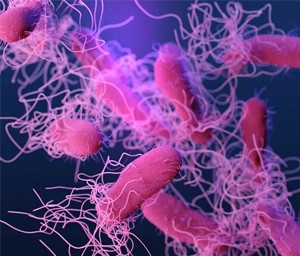views

Introduction
It is crucial to learn that AMR is a relatively recent health concern, mainly undermining the efficacy of required drugs globally. Earlier, the drugs that fought against bacteria, viruses, fungi and parasites were called miracle drugs, but due to the emergence of some strains of body pathogens regarded as the ‘’superbugs’’, the effectiveness of these drugs has lessened.
What is antimicrobial resistance?
Antimicrobial resistance is actually a trend whereby microorganisms, for instance, bacteria, viruses, fungi and parasites, are also left with the capability to fail the drugs that at first neutralize or remove them. This makes the usual type of therapies of no avail and thus augments the infection rate as well as the spread.
Mechanisms of Resistance
These are drugs which are prescribed to cure bacterial, viral, fungal and parasitic diseases, and the development of resistance occurs due to various reasons. Such mechanisms are important in the development of strategies to contain this phenomenon of antimicrobial resistance.
Mutations: Genetic mutations is one way which microorganisms gain their resistance. These are random changes in the DNA that can occur naturally over time. Of these mutations, some might be beneficial to the microorganism for instance, the ability to survive a dose of an antimicrobial drug. Once they multiply, the beneficial mutation is inherited by subsequent generations, and thus there exists a population of antibiotic-resistant microbes.
Gene Transfer: Gene transfer is also another way that microorganisms obtain resistance; here the microorganisms exchange genes from one another. This, however, can happen between individuals or species of the same genus as well as between individuals or species of different genera. There are three main ways this can occur: conjugation, a process where two microorganisms directly exchange genetic material; transformation, where genetic material is taken from the surrounding environment; and transduction, the transfer of genetic material by a virus. This mechanism of gene transfer is comparatively fast in the microbial community and that assists in the shift of resistance genes between two organisms.
Efflux Pumps: Certain bacteria contain efflux pumps, these are proteins that are instituted on the bacterial cell wall. Such pumps are involved in the efflux of antimicrobial agents from the cell reducing the concentration of the drug. Thus, the drug turns out to be less effective in eliminating or inhibiting bacterial growth and development; thus, the bacteria remain alive and reproduce.

Enzyme Production: Another way that microorganisms have adopted in order to defy the antimicrobial agents is by affiliating with enzymes that facilitate the transformation of drugs into effectiveness. For example, beta-lactamase is an enzyme that will inactivate beta-lactamase antibiotics like penicillin. Thus, the remaining bacteria implicitly neutralize the antibiotic and do not risk being killed by it. Such enzymatic degradation poses some issues when it comes to the antibacterial treatment with some of the antibiotics, with the enhanced likelihood of bacterial resistance to such therapy.
Such mechanisms are vital to comprehend in the battle against antimicrobial resistance. It helps scientists and healthcare workers establish new drugs, therapy approaches and guidelines to slow down the further emerging of such bacteria and maintain the efficiency of existing antimicrobial medications.
Causes of Antimicrobial Resistance
AMR has several factors in this regard; it is important to understand these causes and come up with strategies of eradicating this emerging vice.
Overuse of Antimicrobials: The established fact that contributes to the development of AMR is the overuse of antimicrobial drugs. This ranges from, the antibiotic, antiviral, antifungal and antiparasitic class of drugs.It is when used in large quantity or wrongly that there is formation of selective force that leads to growth of antibiotic resistant microorganisms. For example, giving antibiotics to infections they cannot heal—for instance, the common cold or flu—only worsens the situation by making bacteria resistant to antibiotics.
Learn more: https://www.pharmafocusamerica.com/articles/miracle-drugs-to-superbugs
Follow us:























Comments
0 comment